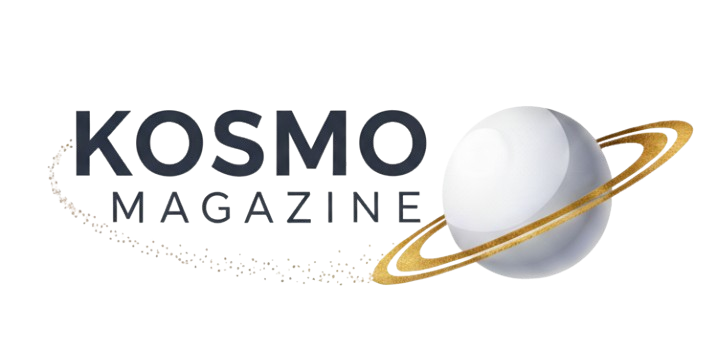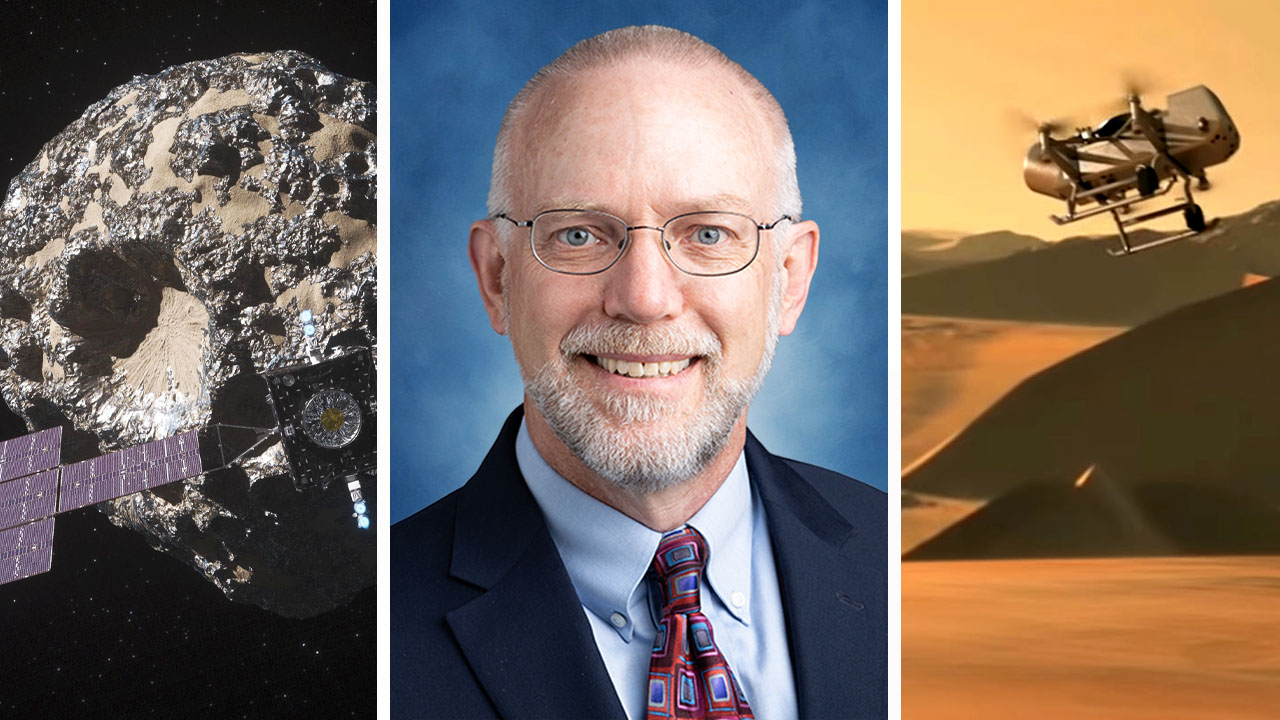We metDavid Lawrence, Planetary Scientist atJohns Hopkins University Applied Physics Laboratory (APL) inLaurel, Maryland (USA).Lawrence is the science lead for three spaceflight instruments: the Psyche Gamma-Ray and Neutron Spectrometer (GRNS) for NASA’s Psyche mission, the Mars-moon Exploration with GAmma-rays and NEutrons (MEGANE) gamma-ray and neutron spectrometer on the Japanese Martian Moons eXploration (MMX) mission, and Dragonfly Gamma-ray/Neutron Spectrometer (DraGNS) on the NASA-funded Dragonfly mission.
The NASA’s Psyche mission, starting in 2023, will have the objective to visit 16 Psyche asteroid in 2029, after about 6 years of traveling. Experts believe that is an asteroid made of metal, rather than rock.
The Dragonfly mission, starting in 2027, will send a rotorcraft lander (vertical-lift octocopter) to Titan, Saturn’s largest moon. Dragonfly, which will arrive in 2034, will the objective of studying prebiotic chemistry and the search for chemical signatures that could indicate water-based and/or hydrocarbon-based life.
The JAXA’s Martian Moons eXploration (MMX) will leave in 2024 and will have the objective to take samples from Phobos (Mars’ moon) and to bring them on the Earth within 2029.
You have participated in many very important space missions. And in the future you will participate in other very large space missions. What are the most important discoveries you have made, through the instruments of space probes?
The most important discoveries were the ones when I was a part of the Lunar Prospector (LP) mission, which was my first project working with planetary science data. I was a postdoc at Los Alamos National Laboratory, and stumbled into working with the LP mission as part of a small but very talented team.
Within a few months after launch and working with the data, we were able to make some important discoveries about the Moon. The first was the first identification of hydrogen enhancements at the poles of the Moon. Identifying polar hydrogen enhancements was one of the primary goals of the mission, and it was highly successful (and exciting). The second discovery was making a map of thorium abundances on the Moon using Lunar Prospector gamma-ray data. The thorium distribution on the Moon reveals fascinating details about how the Moon formed and changed over time. One fun discovery associated with the thorium map was the identification of a significant thorium enhancement in a portion of the Moon that none was expected.
Finally, I just completed the publication of a paper where we showed a global hydrogen map on the Moon. This was a 20-plus year effort that brought to completion work that was started in 1998 with the initial analysis of Lunar Prospector data.
Credit: NASA Goddard
NASA’s Psyche mission will visit a very particular asteroid, potentially rich in precious metals. What is the purpose of the “Psyche Gamma-Ray and Neutron Spectrometer (GRNS)” instrument?
The purpose of the GRNS instrument is to measure the elemental composition of the Psyche asteroid, and this instrument can make this measurement without even landing on or touching Psyche’s surface. One just needs to get into an orbit close to Psyche’s surface to acquire the data.
Why is studying the asteroid Psyche so important? Will we be able to harvest, or extract, precious metals from asteroids in the future and send them to Earth?
Psyche is important because it is an unusual asteroid, such that scientists believe it has higher abundances of “metals” than other planetary bodies. And when we use the term “metal”, it generally means elements such as iron and nickel, but possibly other “precious metals” (such as, perhaps, gold?). From Earth-based data, it is not possible to know how much metal content it really has. So, this is why you need to get an up-close look at Psyche with our instrument to measure its composition. As far as harvesting such metals in the future from asteroids – I don’t know if that is feasible, but I suspect that it could be quite challenging.
Credits: NASA JPL/Arizona State University
You are also the science lead of the “Dragonfly Gamma-ray/Neutron Spectrometer (DraGNS)” instrument, which will be installed in the Dragonfly mission. What difficulties will the DraGNS tool face on Titan? I’ve read that the DraGNS tool will work differently than usual since Titan has a thick atmosphere.
The challenge for the DraGNS instrument is that it will be going to a completely different environment than we have ever visited with a gamma-ray/neutron spectrometer. Consequently, we’ll need to plan significantly to rightly anticipate all the factors needed for a successful instrument.
The thick Titan atmosphere is a big difference between DraGNS and prior experiments. The reason is that all our prior experiments carried out passive measurements where the gamma rays and neutrons were generated by high-energy protons (that is, galactic cosmic rays) that hit planetary surfaces with no atmospheres. Titan’s thick atmosphere prevents these protons from hitting the surface; so, we are planning to bring a particle accelerator (that is, a neutron generator) with us that will bathe Titan’s surface with neutrons, which will create the gamma rays that we use to make our measurements.
Another characteristic of Titan that we plan to use is its cold atmosphere (94 kelvin or -290-degrees Fahrenheit). The reason is that our gamma-ray sensor needs to be chilled to this temperature to operate properly. For prior missions we have to bring along a miniature refrigerator (something we call a cryocooler). But on Titan, we can just place our sensor on the outside of the lander and it will naturally chill to be the same temperature of Titan’s atmosphere, which we think is a pretty “cool” idea.
Credits: NASA’s Goddard Space Flight Center/Johns Hopkins APL
You have visited, through space missions, many worlds of our Solar System. What is the world that has surprised and excited you the most? And which one would you like to visit personally?
Nice question! Based on my history, my favorite place is the Moon, where I first started work in planetary science. There are multiple reasons why I say this. First, since the Moon is where I got my start in this field, it holds a special place in my heart. Second, the Moon has many fascinating places and aspects to study, and we keep finding out new things. And the Lunar Prospector data that was gathered 20-plus years ago is still bearing good fruit. Finally, the Moon is the only planetary body that we can stare at and “explore” with our bare eyes. And it is the same surface that human beings have been looking at for thousands of years, and consequently there is a certain awe to have such a connection with our ancestors from long ago.

